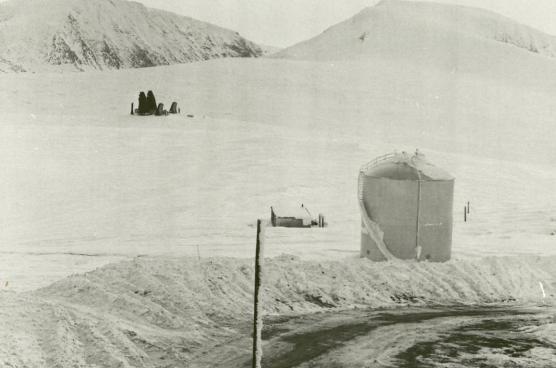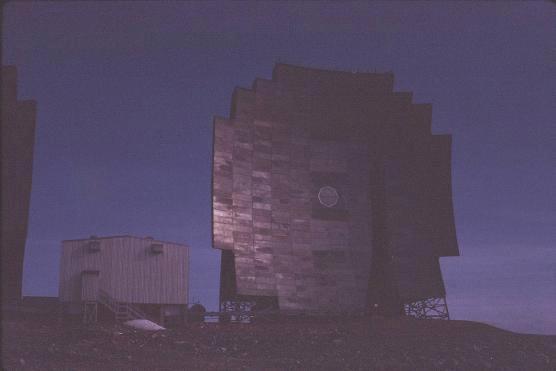




|
John Bubb |
|
|

Antennas
The antennas used for transmission and reception were known as “Billboard Antennas”. The antennas pointing toward Hopedale were 120 feet in diameter and those pointing at Resolution were 60 feet in diameter—a reflection of the relative distances to those sites. The antennas were roughly square in appearance although the reflecting surface was actually parabolic. The antennas were enclosed at the back and the interior was heated by an oil furnace to keep ice from forming on the reflecting surfaces. Feed horns (electrically heated) were mounted on separate towers in front of the antennas. Close-up pictures of the antenna surfaces are rare because the radio frequency power being radiated was at least twenty times higher than a microwave oven and so the most sensible of us stayed at a respectable distance. The picture below shows the Saglek antennas (the black structures in the distance) from upper camp where we lived—a road distance of approximately 5 miles. |


|
The following technical description was contributed by David Davies who also served at Saglek in the 1960’s and 1970’s:
The sail antennas (at Saglek) faced Hopedale and Resolution, there were two in each direction. Each sail was fed from a 10KW transmitter, One was polarized horizontally and the other vertically. Each transmitter was on a different frequency, and the sails were placed precisely a quarter wave length apart. Each station therefore had quadruple diversity reception, space diversity, frequency diversity. polar diversity, and scatter angle diversity. This ensured good reception most of the time as each of the four parametric amplifiers was receiving a different phase.
The following picture shows the face of the 120-foot antenna and the south end of the equipment building |